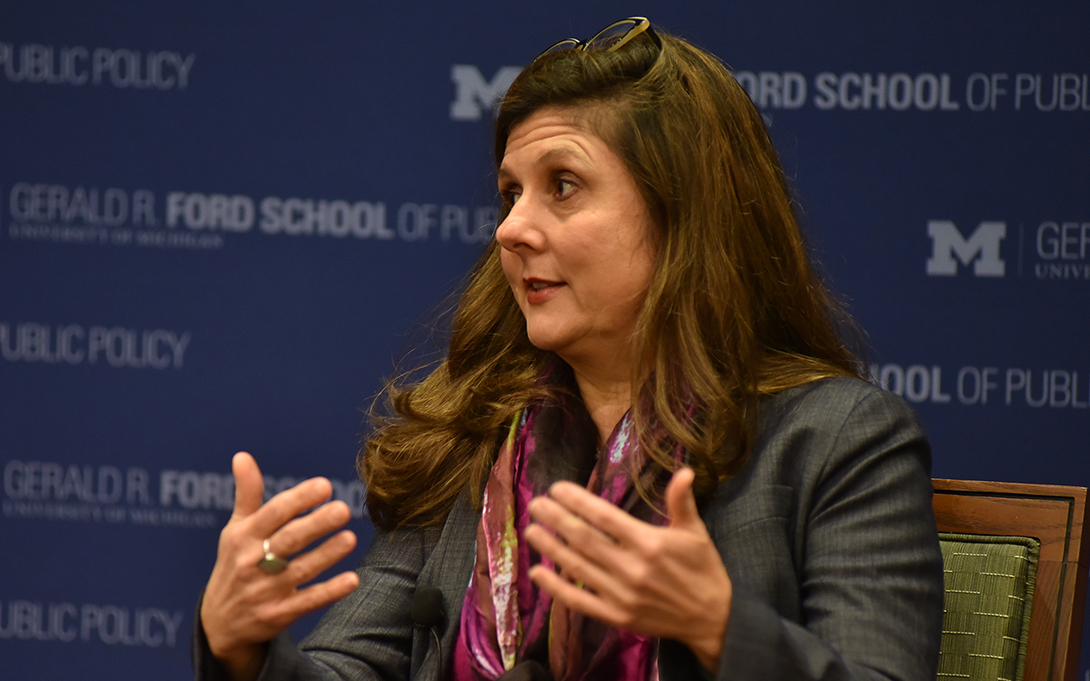
Ford School economist Betsey Stevenson has noted that in January 2020, just before the COVID-19 pandemic shattered labor markets, women’s participation had been at its highest level ever. Now as the U.S. economy rebuilds, she again is commenting on the return of women in record numbers.
As the Washington Post reported that “Remote work appears to be here to stay, especially for women,” Stevenson commented that women are more likely to prefer to work from home, as compared with men, surveys of the American workforce show. The perceived gender gap in remote work is partly because of those personal differences, but it also reflects the different jobs men and women occupy, she said. Women more often have higher degrees, which allow for jobs that are more likely to be remote.
“The gender differences are small compared to the educational differences,” Stevenson said. She said she spoke to a few autoworkers Wednesday, who said it’s impossible for them to work from home. “You can’t build a car at your house,” she said.
“What the pandemic did was allow us to discover the benefits of remote work, home work and technology out of necessity, to survive the pandemic,” Stevenson said. “The necessity has gone away, but the learnings haven’t.”
The U.S. needs more people to come off the sidelines to keep the economy growing, according to a report on NPR.
"Where are the workers going to come from?" asked Stevenson. "What we're seeing is they are showing up month after month to take the jobs, and in particular, it's women showing up to take the jobs."
Stevenson sees that as evidence that women are increasingly determined to play a major role in the economy. Just before the pandemic, women briefly outnumbered men on U.S. payrolls.
"This generation of women didn't just have a foot in the door. They had their whole body through," Stevenson says. "And even when they got pushed out, it's that long work experience, the long resumes, that helped them quickly return."
The Labor Department’s June jobs report showed that the fastest-growing sectors were health care and social assistance, and government work. Stevenson told CNBC that the strength in those categories is a reason why more than half of the jobs added in June went to women.
“It tells us about where the jobs are coming from. They’re coming from the kinds of industries that women tend to work in, like health care, education services and government,” Stevenson said.
Another segment on NPR’s Planet Money also looked at the “women’s labor comeback.” Stevenson noted that employers were desperate for workers.
“Workers have had a lot of bargaining power, not just for higher wages but to say, I can't come in five days a week, or I’ve got to be able to pick my kids up from school and then I can go back to working remotely,” she said.
“If we need to keep adding jobs, where are the workers going to come from? And yet what we've seen month after month is they are showing up to take the jobs. And in particular, it's women showing up to take the jobs.”
Looking at her own profession, Stevenson commented on a recent experiment to encourage more women undergraduates to study economics. 20 college economics departments implemented “light-touch” initiatives for one year aimed at recruiting and retaining female students. Though it did not succeed in attracting a large number of new women economics majors, it did succeed in bringing awareness to the gender disparities in the field.
Inside Higher Ed reported that although she did not participate in the UWE Challenge, Stevenson is also part of the movement to recruit women into economics; she has researched how economics textbooks tend to disproportionately feature examples of economic problems and scenarios focused on male characters and stereotypically masculine hobbies, such as sports. She wrote her own textbooks with the goal of incorporating scenarios about experiences her female students might be more likely to relate to, like babysitting.
“If you’re going to attract women to economics, you want to put them in as many familiar situations as you would put your male students,” she said.
Nevertheless, Stevenson believes the challenge was so effective at bolstering the gender equality movement in economics because it was coordinated. She likened it to moving a giant boulder; although economists, professors and researchers—including herself—had attempted to move the boulder in the past, it wasn’t until 20 universities were pushing it at once that it actually inched forward.
Women's labor comeback, NPR, July 25, 2023
A Challenge to Close the Gender Gap in Economics, Inside Higher Ed, July 12, 2023
Here’s where the jobs are for June 2023 — in one chart, CNBC, July 7, 2023
Women are returning to the job market in droves, just when the U.S. needs them most, NPR, July 5, 2023
Remote work appears to be here to stay, especially for women, The Washington Post, June 22, 2023
